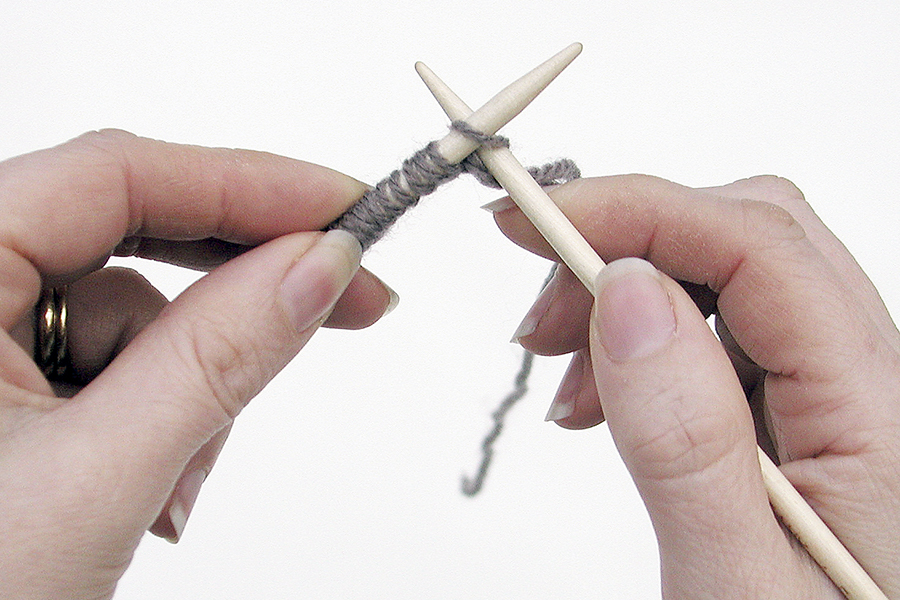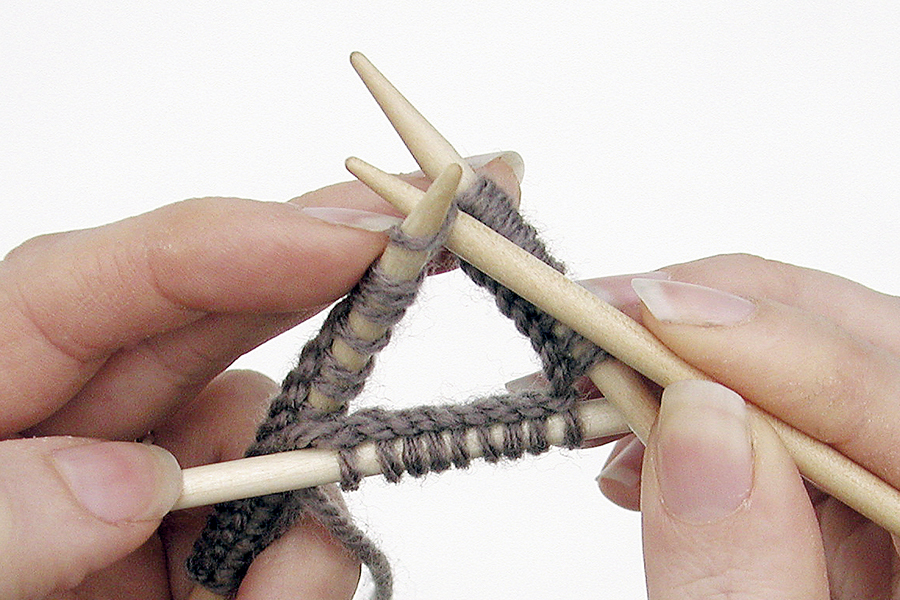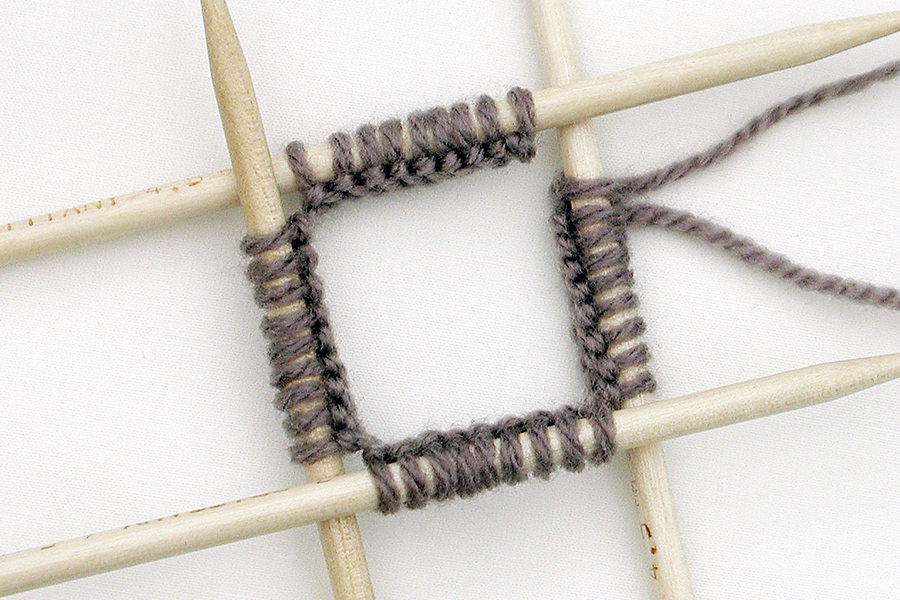How to knit with double pointed needles
Once you’ve cast stitches onto your set of DPNs, it’s time to knit the first round. Before you start, add a stitch marker to show you where the end of the round is. Then check, check and check again that your stitches really aren’t twisted!
Using the ‘spare’ needle as the working needle, knit the first stitch of the first round, pulling the yarn tightly for an invisible join. Knit all the stitches from the first DPN until that needle is empty. The empty needle now becomes the working needle. Continue like this all the way to the end of the round. Every time you change to a new DPN, pull the yarn tightly again.
Some knitters prefer to cast on stitches onto a straight needle, but then knit the first round off that needle using DPNs. This means they’ve worked the first round and arranged the stitches onto DPNs at the same time. Try both techniques and use the one that suits you.
If you find that placing a stitch marker at the start of the round is too fiddly, you can always place it in between the first and second stitches instead. The important thing is that you know where the round starts and finishes.
Here’s how to knit with double pointed needles:
Step 1
Hold DPN 4 and the empty DPN 5 in your right hand, as shown. Hold DPN 1 in your left hand. Insert the empty DPN 5 into the first stitch on DPN 1 and knit it, pulling the yarn tight for a neat join.
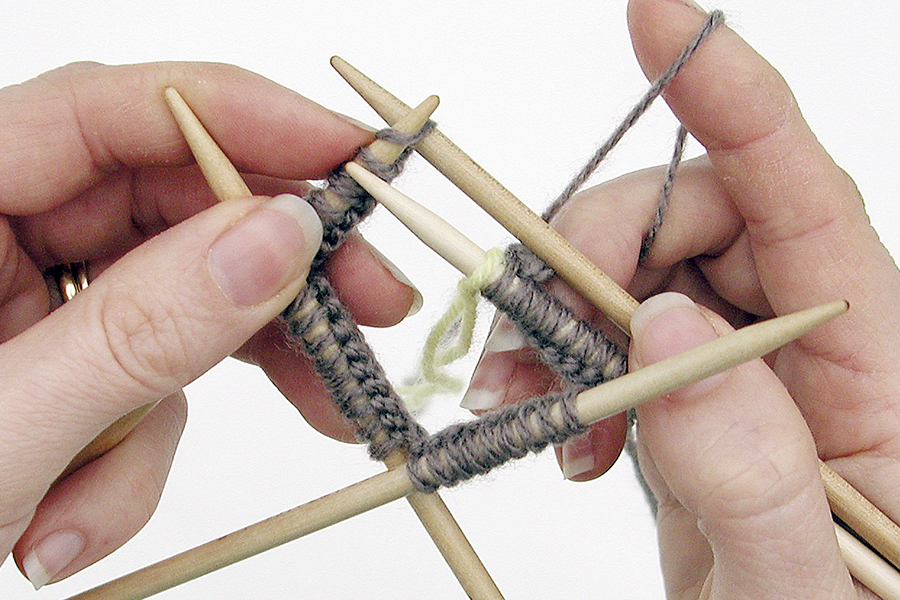
Step 2
Alternatively, knit the first stitch while holding the empty DPN 5 above DPN 4, rather than under it. Or you can let go of DPN 4 and use the working yarn to pull the circle closed.

Step 3
Knit all the stitches from DPN 1 using DPN 5, until DPN 1 is empty. Now the empty DPN 1 will become your working needle: rotate the needles so you’re holding DPN 5 and DPN 1 in your right hand, while knitting from DPN 2.
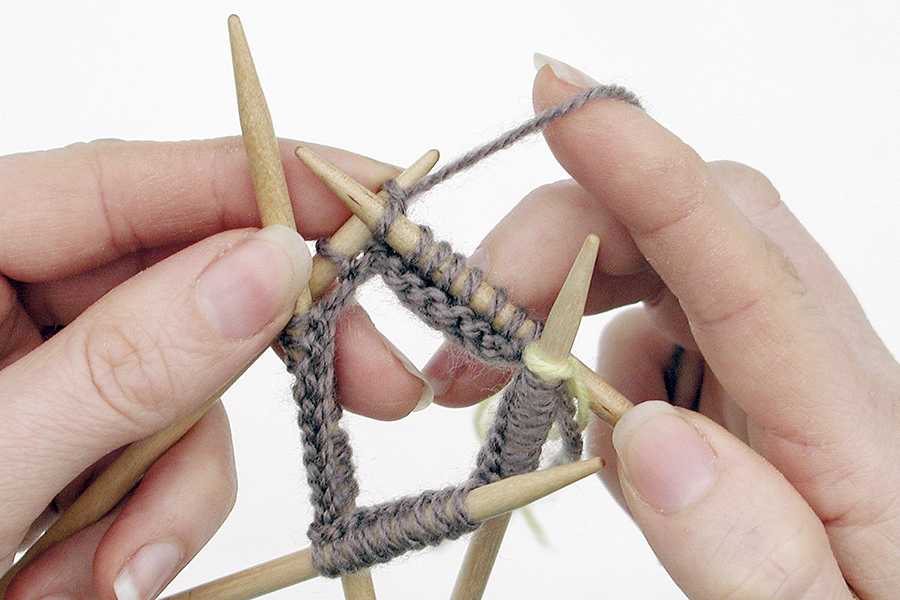
Step 4
Repeat the process, using DPN 1 to knit from DPN 2, using DPN 2 to knit DPN 3, and using DPN 3 to knit DPN 4. You’ll have completed one round. Knit the second round in the same way, without turning.

Double pointed needles: what to buy
When learning how to knit on double pointed needles you don’t need to go on a big shopping spree to buy a set of every DPN you might ever need. Think about what you might want to knit in the round. If you’d like to knit socks, you’ll find it easier to work with the shorter double-pointed needles, around 13cm (5in) long, or short circulars. Most socks use 4ply yarns that require 2.5mm or 3mm size needles, so invest in a set of each size.
If you’d like to knit gloves or hats, you may use thicker yarns and need larger sizes of DPNs. You’ll probably need longer DPNs to knit garments in the round, so that all the stitches will fit on the needles. If you find that your stitches are falling off the needles, change to longer DPNs or use point protectors to save your stitches.
Double pointed needles come in sets of four or five, in lengths ranging from 13cm (5in) to 40cm (16in). You can knit in the round with a set of four just as easily as a set of five, but we recommend you buy sets of five, so that you have the choice of whether to use four or five. It’s always best to work with the number of DPNs stated in the pattern you’re following, otherwise you’ll have lots of tricky adjustments to make.
Beginners often find wood or bamboo DPNs are easier to work with than metal or plastic ones, because they’re less slippery and ‘grab’ hold of your stitches a bit more. We recommend you find a pattern you want to use first (such as our men’s socks knitting pattern), then buy the DPNs you need to make that item. You’ll gradually build up a collection of DPN sets.
Here are three types of double pointed needles to try:
1. KnitPro Symfonie double pointed needles
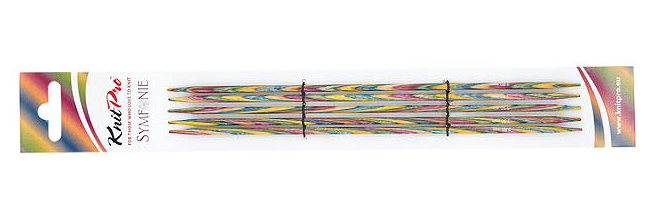
These attractive 20cm-long needles are made from birch wood and come in a pack of five. Sizes start at 2.5mm (ideal for socks), and as they’re not too slippery they’re a good choice for beginners.
Buy KnitPro Symfonie needles from John Lewis.
2. Pony Classic double pointed needles

Pony’s aluminium double pointed needles are a fantastic budget option if you’re not sure how you’ll get along with DPNs. They come in packs of five (four-packs are also available) and a huge range of sizes.
Buy Pony Classic double pointed needles from The Knitting Network.
3. Clover Takumi double pointed needles

Smooth bamboo and rounded, tapered tips make these double pointed needles a joy to work with. Get them in a set of five and sizes ranging from 2mm-9mm, plus a choice of 16cm and 20cm lengths.
Buy Clover Takumi double pointed needles from Minerva Crafts.
To follow our how to knit on double pointed needles tutorial you’ll also need:
Stitch markers
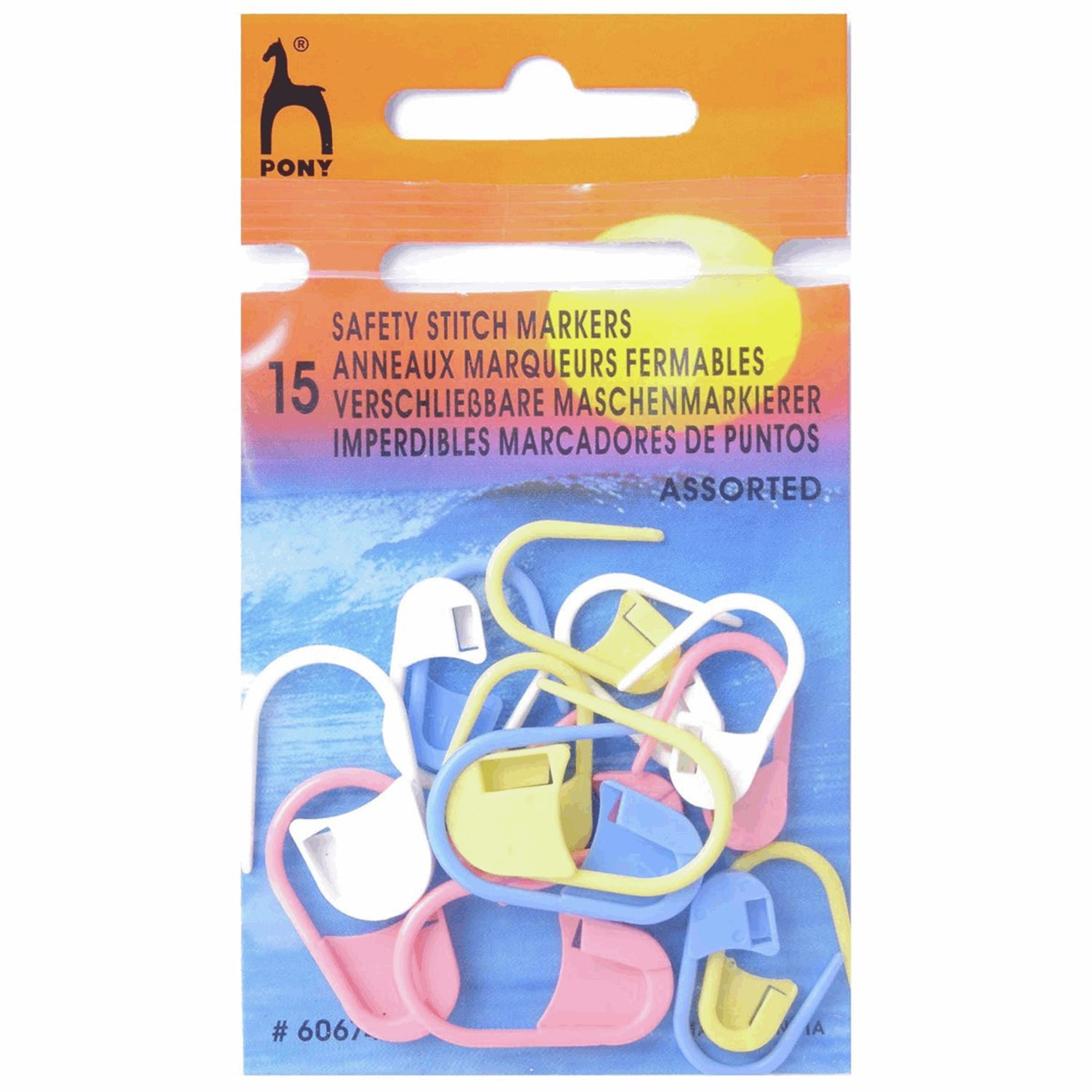
Pony’s locking stitch markers are our go-to for a wide range of projects. Simply hang one off your double pointed needle or clip it onto the first stitch of the round and you’ll never lose your place!
Buy Pony locking stitch markers from Amazon.
Point protectors
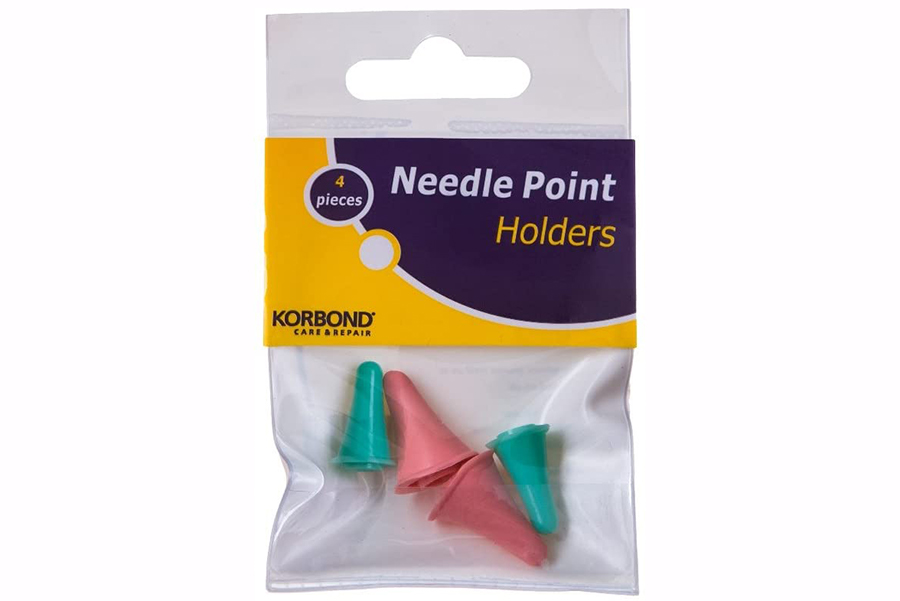
Keep your stitches from falling off your working DPN while knitting, or when you put your project down, with this point protector set from Korbond, which includes two small and two large rubber point protectors.
Buy Korbond point protectors from Amazon.
Check out our beginner’s guide to knitting in the round for more on circular knitting, and the rest of our how to knit tutorials for other ways to boost your skills. Plus now you’ve learned how to knit with double pointed needles, give it a go with one of our knitting patterns!

